Estimated reading time: 10 minutes
Disclaimer: I am not a medical doctor and nothing in this article should be taken as medical advice. Please talk to your doctor before using any of the herbs and/or remedies mentioned in this article.
When you switch to natural medicine, opening a first aid kit can make you cringe. Being prepared requires that you have the right remedies on hand and know how to use them during minor emergencies. Herbalists and preppers alike need to consider how to build a medicinal first aid kit.
Active families and individuals have plenty of opportunities to use a first aid kit. All of my kids have been injured several times throughout the year, playing at parks or while camping. Having natural remedies on hand gives me peace of mind.
Once you decide to build a medicinal first aid kit, you have to gather the right supplies for it. Each item that you place into the kit needs to have multiple uses. You want simple remedies that can easily be stored in a nylon bag or box. Some people pare down the kits even further to keep in their purse or backpack.
Want to save this post for later? Click Here to Pin It on Pinterest!
What to Include in Your Medicinal First Aid Kit
Here are my favorite remedies to put in the kit. Most of these items are available at a well-stocked health-food store, or you can purchase them online.
Activated Charcoal
Everyone needs to have activated charcoal in their kit. You can use it for acute food poisoning, vomiting, diarrhea, and ingestion of toxins. If you come down with a case of the stomach bug, take a few capsules of activated charcoal to help calm the properties.
Aloe Vera Gel
Aloe vera gel is perfect for sunburns and any mild burn or scald. If you accidentally burn yourself with a cup of hot tea, spread on a layer of aloe vera gel to cool and treat the wound quickly. You can keep a small aloe vera plant on hand and break off pieces when you need them. The other option is to purchase a bottle of gel to keep on hand.
Arnica Gel or Cream
Arnica is known for its ability to treat injuries. This herb has anti-inflammatory and circulation-stimulating properties, and having arnica gel or cream in your kit is excellent for bruises, sprains, strains, and sore muscles. Another choice is to have arnica tablets on hand, but they don't work as fast.
NOTE: Make sure that you don’t apply arnica to broken skin.
Baking Soda
You want to have some baking soda on hand. It’s great for stings and bites. All you have to do is make a paste with baking soda and water, then slather over the bite.
Calendula Salve
Calendula is known for its multiple properties; it’s an astringent, antibacterial, antifungal, anti-inflammatory, and wound-healing herb. These properties together make it the perfect herbal salve. It helps to heal wounds, kick an infection, and reduce swelling.
Cayenne Pepper – Capsules, Tincture, or Powder
The hardest thing about cayenne is figuring out how you’re going to carry it with you. Cayenne capsules are the easiest, but having cayenne powder is great because you can apply it topically to wounds. Some people swear that taking cayenne pepper helps increase blood flow and quickens recovery.
Citronella-Based Insect Repellent
Bugs aren’t an emergency, but they can be a nuisance when you’re out in the woods. Keeping an herbal repellant that contains citronella in your kit is a great idea. Citronella is a citrus-scented essential oil that comes from a grass grown in Southern Asia. You need to apply herbal based insect repellants every two hours.
Coconut Oil
Coconut oil can be used as the base for multiple tinctures and salves. So, if you keep a variety of herbs on hand, you’ll want to have plenty of coconut oil. It’s antifungal and great for chapped lips and dry skin. You can also take coconut oil internally, but make sure you purchase high-quality coconut oil.
Colloidal Silver
Colloidal silver is like a natural antibiotic that you can use to treat infections naturally. You can take colloidal silver internally, but most people use it externally. It's an excellent remedy for pink eye and any skin infections. You can mix it with water in a spray bottle and spray the back of your throat. Colloidal silver is worth the purchase.
Echinacea Liquid Extract or Tincture
Echinacea is one of my favorite herbs, and I always have a tincture on hand. This herb is an immune system stimulant that can be used for infections. It’s quite versatile, and it can be used internally or externally.
Epsom Salts
Epsom salts are a source of magnesium, and soaking in a bath with Epsom salt can help with cramped muscles and leg aches. Dissolve ½ to 1 cup of salt in the bathtub for sore muscles or to detox. You also can soak your skin in Epsom salt for 15 minutes to make splinters easier to remove with tweezers.
Ginger Tea Bags and Capsules
Ginger is great for stomach problems. The gas-relieving properties of ginger help to soothe digestive issues, relieve motion sickness, or kick nausea.
Goldenseal Capsules
Goldenseal is antimicrobial and works against a variety of microorganisms that might cause diarrhea or other digestive problems. It also has antiseptic properties that you can sprinkle over cuts or wounds to stop bleeding.
Hydrogen Peroxide
Always keep bottles of hydrogen peroxide in your first aid kit. You can use it for cleaning out wounds, helping to prevent ear infections, and reducing the length of respiratory problems. It’s a wise idea to have some hydrogen peroxide available in the first aid kit.
Lavender Essential Oil
Lavender is an all-purpose remedy for so many ailments. It has sedative, anti-inflammatory, and antiseptic properties. You can use it to treat anxiety, insomnia, headaches, wounds, and burns.
Manuka Honey
Manuka honey is specialty honey that comes from bees in New Zealand that pollinate the manuka tree. It has higher antibacterial properties than regular honey. Many people use it just like a triple antibiotic ointment for cuts and scrapes.
Manuka honey can be used to help speed up healing of injuries and reduce the risk of infection for wounds and burns. Apply it to a burn to speed the healing, and spread it over your face to get rid of acne.
Peppermint Essential Oil
Peppermint is great to have on hand because it soothes an upset stomach, helps with sinus congestion, and stops itching from bug bites. Be careful if you have delicate skin because peppermint oil can cause a skin reaction.
Valerian Tincture
Valerian has sedative properties that make it great for anxiety, insomnia, and tension. You can also use it as a mild pain reliever.
Witch Hazel Extract
Witch hazel is known for its mild astringent, antiseptic, and anti-inflammatory properties. It’s useful for so many ailments, like insect bites and skin irritations; you can even treat hemorrhoids with witch hazel. Some people dilute essential oils with witch hazel for a topical home remedy.
Extra Items to Put in Your First Aid Kit
You need more than herbs, tinctures, and essential oils in your medicinal first aid kit. Make sure you have these items to make applying and using the kit easier and more practical for unique circumstances.
- Adhesive bandage strips
- Adhesive tape
- Alcohol pads or a small bottle
- Bandages
- Cosmetic clay
- Electrolyte replacements
- Hand sanitizer
- Moleskin
- Roll of gauze
- Scissors
- Sterile gauze pads
- Thermometer
- Tweezers
Herbs to Keep in Your Herbal First Aid Kit
Depending on how you’re going to use your herbal first aid kit, you’ll want to keep several herbs on hand to create teas and poultices. Having the makings of good herbal tea can help cure dozens of ailments.
Calendula

Calendula is an all-purpose herb that you can use to create a tea to boost your immune system, ease a sore throat, cure seasonal allergies, and soothe sore muscles. Calendula can help to soothe sunburns and heal wounds when applied as a poultice.
Comfrey
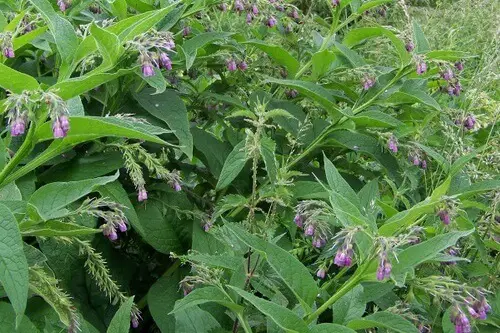
Comfrey has a history of being used to help heal broken bones and encourage rapid new tissue growth. It makes an awesome poultice, compress, or salve. Just make sure you don’t apply comfrey to deep wounds before they close.
Lavender
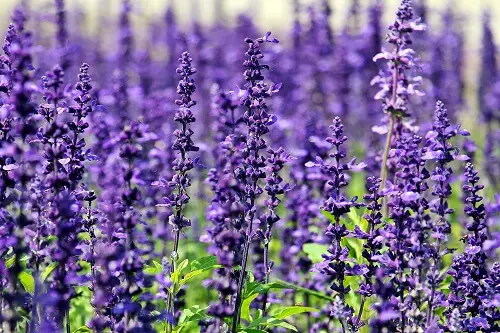
Lavender helps to soothe and relax you, but it’s also a healing herb that you should keep on hand. Drinking lavender tea can relieve headaches and sore throats, calm your nerves, treat a cough, and soothe sore muscles. You can use lavender to clean out your wounds and heal them as well.
Peppermint
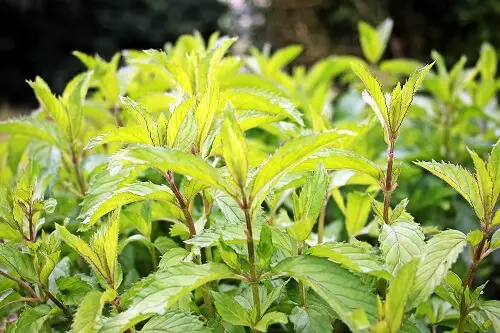
Keep some peppermint on hand to help battle diarrhea, nausea, gas, and bloating. A nice cup of peppermint tea can ease a stomach ache. You can use it to create creams to alleviate muscle pains, reduce your body temperature, and soothe burns.
Valerian Root
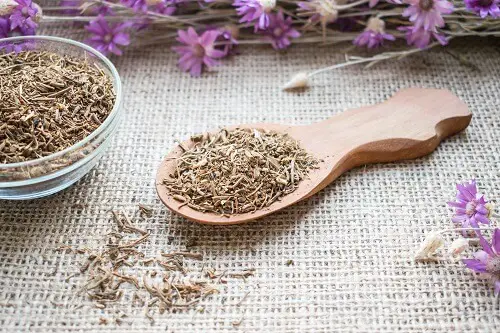
Valerian is known to help you drift off to sleep when you're anxious or stressed. Drinking valerian root tea can soothe those frayed nerves and give you the rest you need. Plus, it also can help relieve a cough and dull any pain you might be feeling. However, it smells like you're drinking stinky feet, so hold your nose!
Yarrow

Yarrow is like a natural bandage. You need to keep it on hand because it can help to stop bleeding on a fresh wound. After cleaning out the wound, apply a poultice or powdered yarrow. Keep that in your pack and hope you don’t have to use it.
Final Thoughts
Building a medicinal first aid kit takes time. You can make a large one to keep at home, then create small ones to take with you on hikes and camping trips. Over time, as you learn how to use herbs more often, you'll find more remedies to add to your kit.
Like this post? Don't Forget to Pin It on Pinterest!


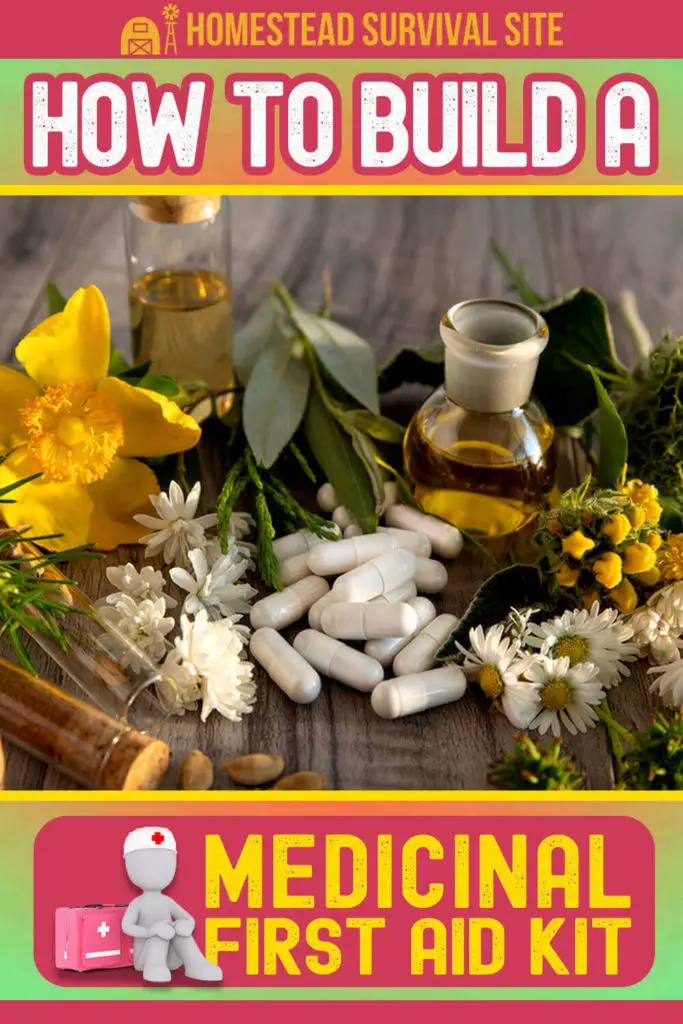

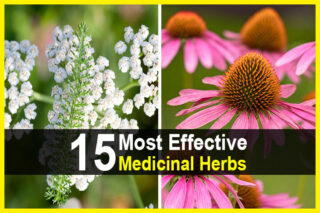
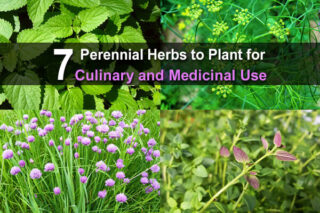

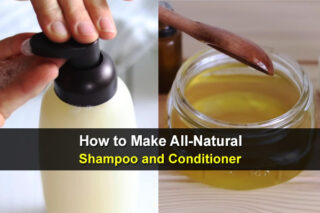
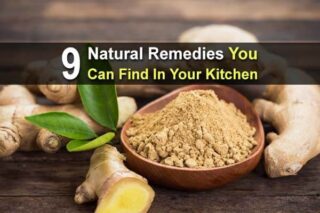


Rather than going to your Home Depot garden center, I’d go to your grocery store or pharmacy to get OTC supplies: antihistamine, Tylenol, ibuprofen, antidiarrheal, activated charcoal, mult-vitamins, triple antibiotic ointment, steroid and antihistamine creams, and wound care products – gloves, bandages, scissors, tape, etc. Vaseline is good for some wound care plus many more uses.
THEN go to the garden center to buy your honey some flowers.
Click on the given link to read more such post ourtechtime.com/first-aid-kits-near-me-the-benefits-of-having-a-first-aid-kit-at-home//
Thank yo